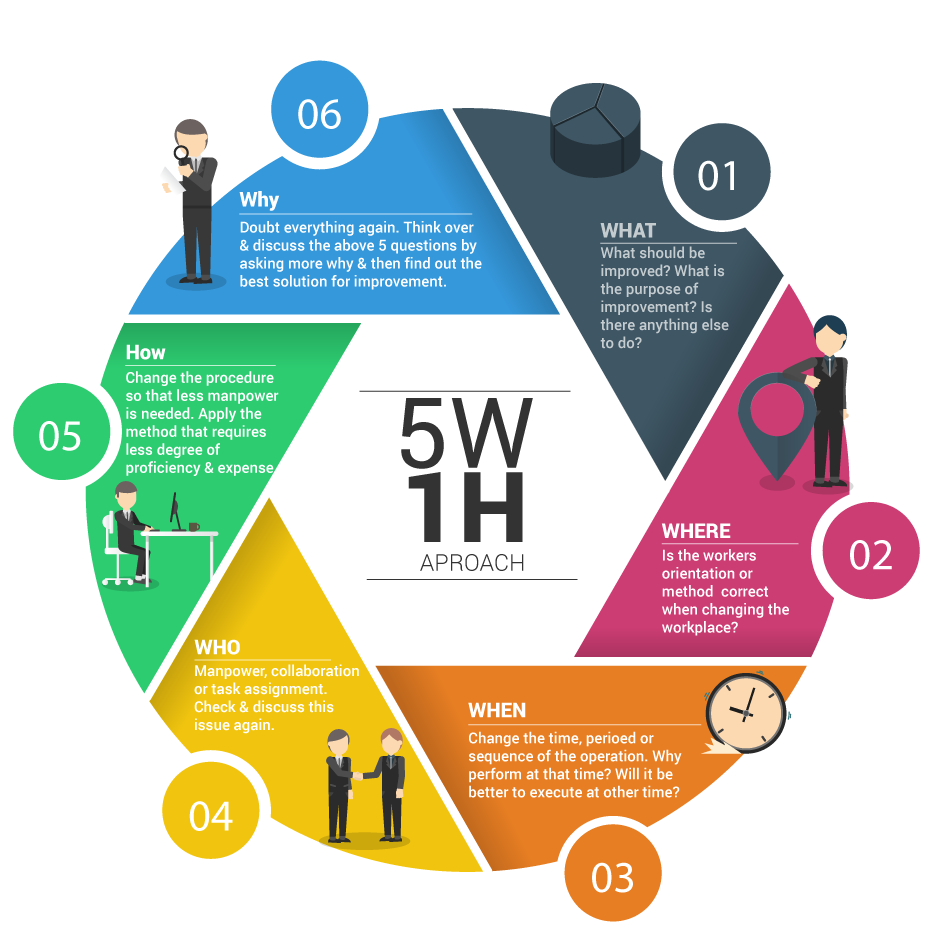
As the name implies, business systems analysis is the surveying and evaluation of different processes and systems in a business. The focus of the work is usually on the automation in the mechanisms of the systems, which means that it is often closely linked with Information Technology (IT) systems. Through analysis of a business’ tools, infrastructure, systems, and even the work that the team does, the analyst can explore ways to improve the business by optimisation.
Owing to the nature of the position, the business systems analyst (BSA) often works closely with individuals managing different departments in a business, as well as any line managers, project managers, or operations managers in the field.
Business analyst job description
The business systems analyst in a company is accountable for the assessment and improvement of systems in the business. Basically, the BSA is responsible to make processes in a business work in the most efficient way. This happens through research, strategic testing, planning and implementation of new, optimised systems.
The BSA must consider how the trajectory of the company’s functions affect the future of the company, and should explore ways of putting plans in place to cater for future needs and growth.
One of the key components in business systems analysis is how the Systems Development Life Cycle can influence the success of a business. The BSA should look for ways to implement the right system at the right time in order to move the business forward in the direction of excellence.
What is the role of a business system analyst?
A successful BSA has several responsibilities that they juggle on a daily basis. The role requires working with both systems and people in a way that promotes productivity. This means that the business systems analyst:
- Looks to identify issues in current systems to ensure fruitful business growth.
- Focuses on functions of the business to improve important systems.
- Works closely with organisation structure designers to develop and implement new processes.
On a relational and human resourcing front, the BSA offers a unique perspective because they are looking at the business from a critical point of view. This means that they can empathise with customers or stakeholders who are hoping to expect the best from a company. The result is that the BSA:
– Liaises with customers and stakeholders to understand what they want.
– Communicates with field experts and researchers to find the best way to offer the required processes.
– Interacts with different department managers to ensure the systems are running correctly.
With “analysis” in the title, it is unsurprising that research is a crucial component in the business systems analysis field. Investigating better ways for a company to perform tasks is possibly one of the most important parts of being a BSA. Therefore, the analyst:
– Analyses the needs and requirements of the employees, the business, the customers and stakeholders.
– Looks for problems in the business and finds ways to solve the issues.
– Investigates designs and new technologies to apply to the business model.
What does a business analyst do?
A BSA analyses all of the working systems, protocols and processes in an organisation, evaluating aspects of the business with regards to what works well and what systems should be changed or removed. The business systems analyst looks at the practical workings of the business with the intention of improving methods and making systems more efficient.
The BSA of a company also considers what clients and stakeholders want and need from the business and look for productive, creative ways to provide what is required.
The different types of business systems analyst jobs

Since business systems analysis is connected so closely with IT, the two career paths often cross and link up. The role itself is dynamic and multifaceted, with a focus on different aspects related to the systematic approach of the business.
Although becoming a general business systems analyst is a career option, there are also branches in the field ranging from entry-level to top-end professionals.
Business analyst
This is both a general career for a BSA and an encompassing term for the field. The business analyst is responsible for the optimisation of systems by focusing on the structures within the company. This involved evaluating the state of the business and conducting constructive criticisms for the unhelpful or inefficient protocols and providing solutions to improve them. The key focus for a business analyst is on the business systems more so than the technology.
Marketing researcher and specialist
Although this might sound like a marketing role, it still has a key attention in the field of analysis. A marketing specialist works with product reviewers and other marketing researchers in order to discover what systematic strategies of sales work best. From there, the marketing research might use competitor products to analyse the performance of the business from a sales point of view.
Systems analyst
While business analysts concentrate on the operations in and related to the business, the systems analyst has to pay close attention to the technology behind the company. This role, in particular, is linked to IT and software systems. The systems analyst is responsible for considering and converting the high-levels of a business’ needs into operational workflow and applicable programs that developers can engineer into software for the business.
Business consultants
A business consultant is specialised in specific industries and is focused on providing their experience and expertise to a business. The consultant looks to implement new systems – based on their industry knowledge – into the company’s processes to target particular objectives.
What skills are needed for business and systems analysis?
A successful BSA usually has a broad position with specific focuses. Because of the dynamic role, they are able to tackle the variety of tasks through a honed set of skills. While work experience helps to develop the necessary expertise, aiming to sharpen the skills necessary for the career is recommended. The characteristics required to be a great business analyst are:
Adaptive
In business, things go wrong despite the amount of time spent planning. Unexpected issues arise and that’s okay. However, it requires the person developing the systems imperative to the workflow to be able to work around the obstacles, rather than getting stuck by them. A BSA needs to be able to adapt to changes in a business in order to perform to the best of their ability.
Good at communication
In any field, it’s crucial to be able to communicate a message clearly. In business systems analysis, this is double as important. Whether to a team member, a manager, or a stakeholder, a BSA must be able to explain exactly what they mean. If not, important instructions with regards to the systems of business could be confused, which might lead to an excessive inefficiency in time and money.
Relational
It is important for a business systems analyst to be able to interact well with customers and stakeholders. Since these business relationships are critical to growth and potential investment and revenue, the BSA needs to be skilled at conducting meaningful exchanges with individuals. The analyst should be able to get along with people in order to build and develop good relations between on behalf of the business.
Good with time management
A BSA is tasked with developing systems which make work run as smoothly – and as timeously – as possible. It, therefore, should be in their nature to be efficient and understand the importance of good time management. In any successful business, work happens on time and any successful BSA knows this and ensures that the right systems are put in place to make sure it does.
Creative thinking
“Analysis” might not sound appealing to the imaginative individuals, but there’s an element of creativity involved in looking for new ways to improve old tasks. In order to develop simple ways to optimise complicated systems, there’s a reasonable amount of out-the-box thinking which needs to happen.
Business systems analysis using the 5W and 1H approach

Since one of the fundamental purposes of business systems analysis is to improve processes in a company, it is important to consider what problems exist in the systems in order to solve them.
Using the 5W’s and 1H technique, the BSA can identify, define and find issues. This approach is taught in detail in our Business and Systems Analysis short course.
The 5Ws and 1H:
- What is the problem that needs fixing?
- Why is it important to fix?
- Who is involved? Is the customer affected or is it an internal issue that needs resolving?
- When was the issue discovered and when did it start?
- Where is the issue?
- How can it be fixed?
What are the stages of systems development life cycle?
The systems development life cycle, commonly referred to as the SDLC, is the process of turning a theoretical model of business systems into a functional and practical one and involved the implementation thereof.
The SDLC was once a five-step process but has been revised to a cycle with seven phases of development. These stages are:
- Planning
- Requirements analysis
- Designing
- Development
- Testing – and integration
- Execution
- Operations and maintenance
Planning
In order to start, you need to have a plan. In the planning phase, the BSA considers the scope of the project with regard to a number of points, such as how many things need to change, what exactly can be implemented, how long a systems overhaul might take, and the budget required compared to the budget available for a project. Planning thoroughly looks at the resources and how they can be used.
Requirements analysis
Where planning has a focus on what needs exist from the business side, requirements analysis looks at what is required from the stakeholders and customers. In this phase, a list defining the necessary tasks ideal for both the business and the customers and stakeholders is created.
Designing
Following the planning and requirements analysis phase, the systems architecture team can start work on designing the protocols which will be developed and implemented into the business. These designs work to start putting the correct infrastructure in place.
Development
Under the development phase, the software necessary to implement the newly developed processes is created. The software is practical, functional, and usually remains in testing until ready to launch.
Testing
Before a new system can be fully integrated into a business, it needs to be tested to make sure there are no lingering bugs or issues in the software. Not only does the software undergo testing to ensure it is working as it should, it is also tested for quality purposes. It is important to test the system multiple times, and under as many different scenarios as possible to make sure it works under all situations and to avoid simple issues in the future.
Integration and execution
Once fully tested, the systems are launched into the business. Where possible, this should be an automated process, ensuring that the new systems are integrated smoothly. In the best case, this phase makes a difference with the least effort to change the existing systems in place.
Operations and maintenance
Once launched, the new software and systems in place should be monitored to ensure that they are aligned with the company as they have been planned, developed and tested to do. If any problems arise, they should be resolved as quickly as possible. If any systems need maintenance, it should be scheduled and automated where possible.
Business analysis salary
According to Payscale, the average salary for this position in South Africa is R353,303 per annum.
Business systems analysts can expect to earn the following according to their occupational level:
| Occupational level: | Average annual income: |
| Entry-level | R350,165 |
| Mid-career professional | R490,798 |
| Top-end professional | R640,000 |
A bonus remuneration within this field varies according to your experience and ranges from R7,000 – R150,000.
How to become a business analyst
You need to work hard to become an expert figure in business systems analysis by taking every opportunity presented. Gaining experience in the industry is an important way to learn on the job quickly.
Taking a short course in business systems analysis is highly recommended as a means to gain the important and practical knowledge necessary to excel in the field. Through MasterStart, you learn how to both identify and tackle a problem in the best way possible as well as gather in-depth knowledge in analysis related to internal systems and competitor research.


